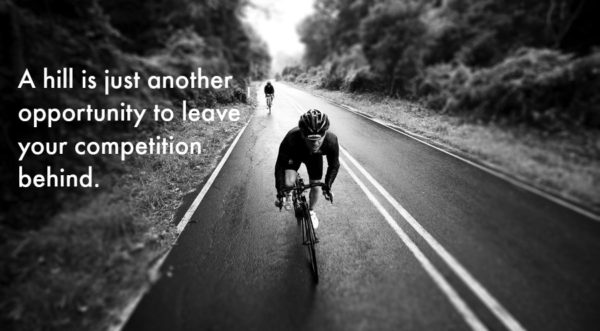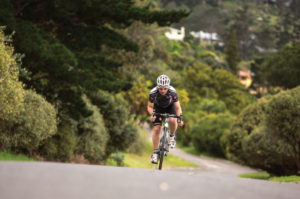Love them or hate them, cycling uphill is an inevitable part of cycling (unless you somehow map out perfectly flat routes). So, when you’re sitting at the bottom of a daunting climb what is your go-to game plan? When you’re pushing your muscles to edge of their ability, you can only tell them to “shut up” so many times – no matter how tough you are they are going to win that conversation.
A common inner monologue when approaching a hill is to start telling yourself to “Attack the hill!” Although this mantra may be effective in keeping your mental toughness up, the overall technique doesn’t work. Here are some of the most common mistakes cyclists make on climbs, and how to hit those hills with confidence.

Pacing
Attacking the hill may work if it is small climb with the crest in view from the bottom. However, if you go in too aggressively, sure you’ll feel strong at the bottom, but once you hit a certain point it’s easy to hit a wall. You overexert your muscles and skyrocket your heart rate rather than pacing yourself for the long game. If you find yourself often slowing to a crawl halfway through a climb, think about gearing down earlier and keep those legs spinning. You will then have the energy to “attack the hill” when you reach the final push over the top.
 Using Too High A Gear
Using Too High A Gear
It may sound obvious, but many cyclists are guilty of heading into hills in a high gear because of that fresh leg feeling. As mentioned above, it may feel great at the start of the hill, but soon you’ll be grinding that gear and giving your all just to stay upright. Gear down before hitting the hill, keeping your legs spinning at 70 rpm or more. If you find your legs slowing down, gear down to keep your rpm in that range.
Stress and Improper Breathing
Not everyone is a natural climber, and looking up at a tough climb can be stressful mentally. If you find yourself gripping your handlebars with a vice grip, it’s a sign that you need to work on relaxing your body. Instead of wondering if you’re going to make it and letting the panic settle in, break the hill into segments in your mind. Starting easy, keep your body relaxed and breathing as deep and slow as possible.
As it starts to get tougher, think about engaging your core, flattening your back and powering each pedal stroke through your core. Pick a landmark up ahead and ‘real it in.’ Once you’ve reached it, pick another. Giving yourself these small victories can help keep you positive and focused, no matter what your legs are saying.
Standing Up
Standing up can cause you to blow up sooner as it puts more load on your legs resulting in an increased need in oxygen to be delivered. Contrarily, staying in the saddle keeps your heart rate down. Of course, if you are a lighter rider and have practiced standing and climbing, then there’s nothing wrong with using it as a time to stretch your legs and put down some extra power, just use it sparingly.
Under Fueling
If you’re approaching a tough climb, you want to be well-fueled. This doesn’t mean chowing down an energy bar right before hitting a hill, that will sit like a rock in your stomach. Instead, work on having a bite and some sips of water every 20 minutes or so on a ride with a lot of climbing. If you start feeling lightheaded and weak, this could be a sign that you haven’t fueled your body properly.
Not Riding Enough Hills!
You’re not going to get better at anything by wishing it into reality. Climbing is tough, and it’s never going to get easier, but the more you challenge yourself the stronger you’ll get. Half the battle is finding your rhythm with climbing. Once you do, you may find yourself even looking forward to the hills!